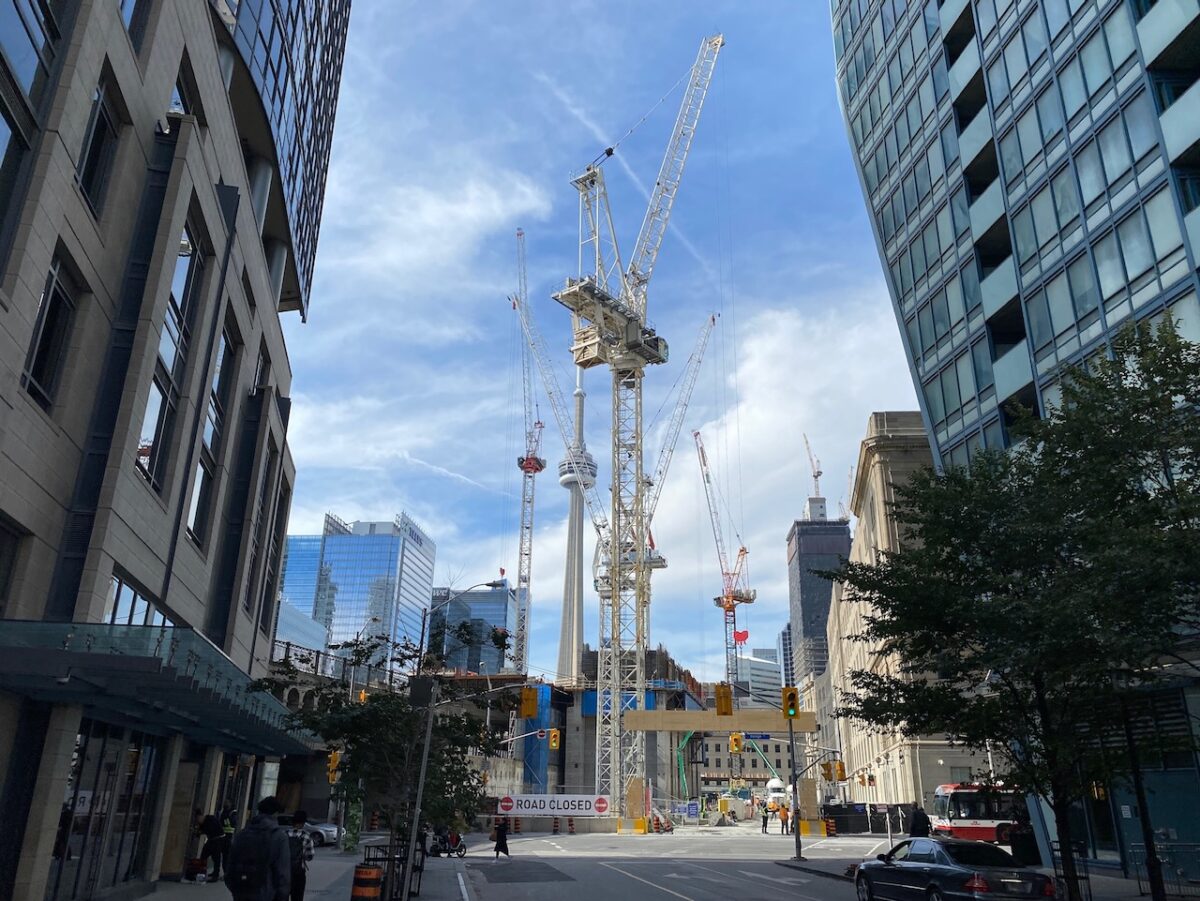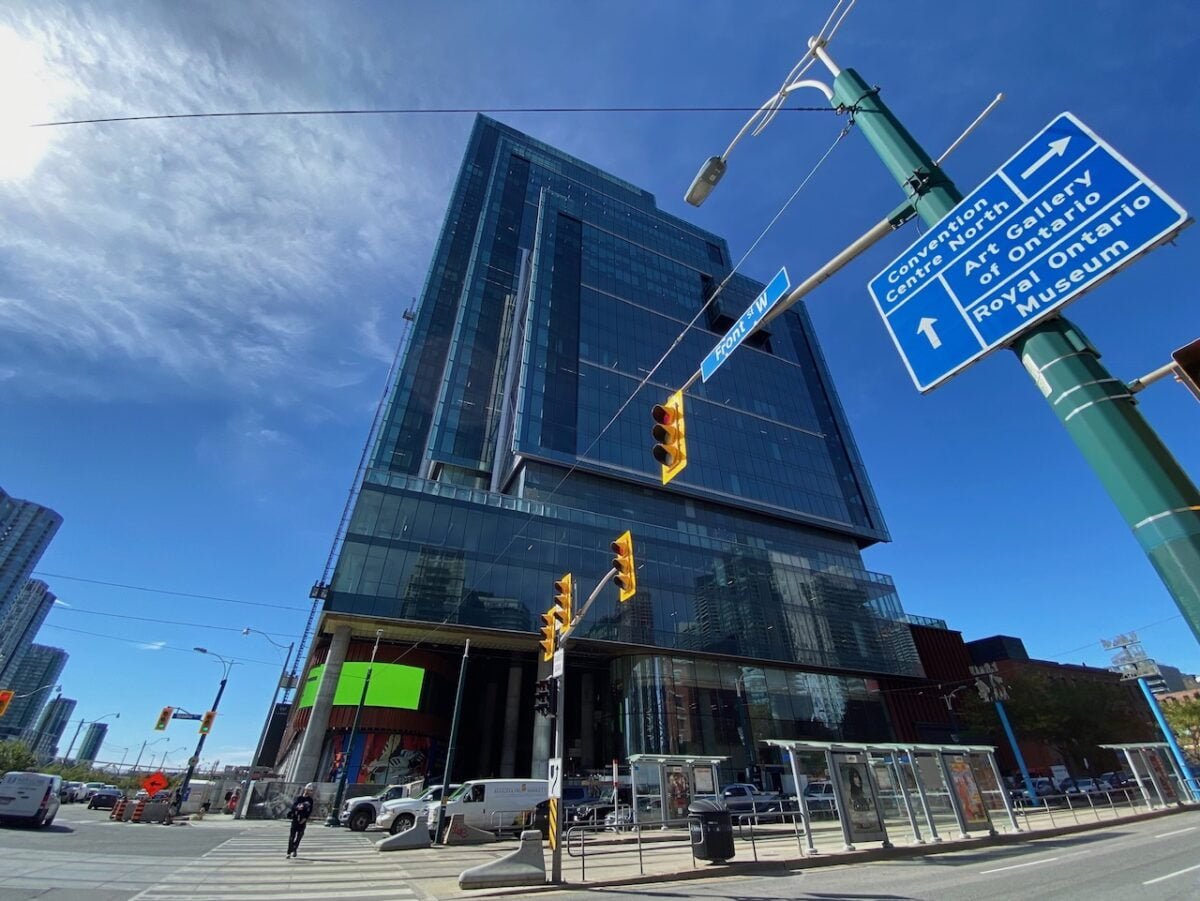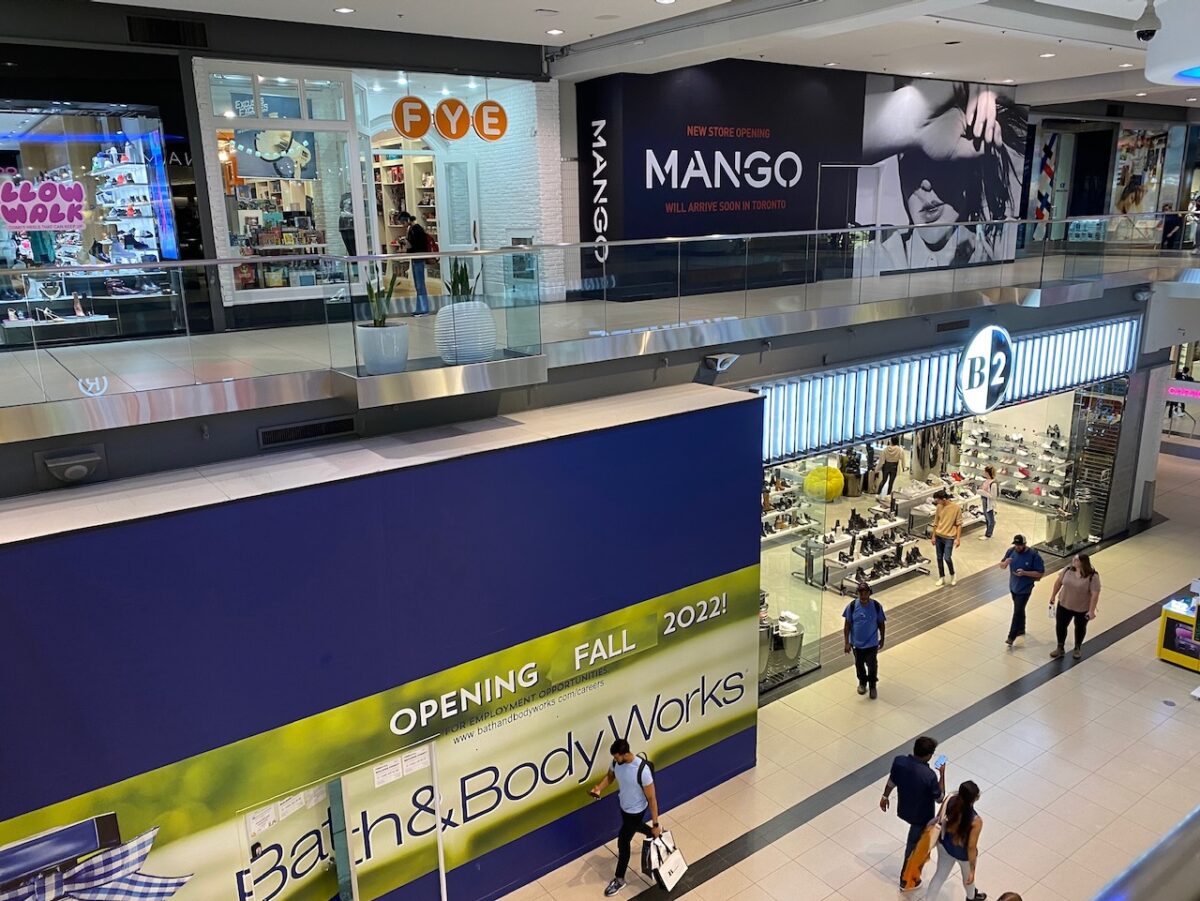A retail report by commercial true estate organization JLL suggests retail leasing action in Toronto need to keep on being sturdy following a sturdy press in the second quarter of this 12 months.
Both equally enclosed and open-air Toronto retail homes have captivated new concepts, with a particular consideration from initial-to-industry. Combining a dip in Q1 and the subsequent rebound in Q2, on stability the initial fifty percent of the calendar year remained on par with the initial halves of 2021 and 2019, it stated.
“Foot targeted traffic is catching up, curiosity in in-retail store buys continues to be high, and pent-up demand from customers for vacation and expert services is primary to new openings, primarily restaurants. Quite a few retailers and food stuff-services operators have concluded that this is a window of opportunity they shouldn’t pass up, and some are willing to take in the present-day higher construction costs ‒ even setting up solely new spaces ‒ in buy to capitalize,” explained JLL.
“Increasing need for retail room, much less accessible spaces, and climbing inflation and desire rates are amid the key contributors to the acceleration of rents in Q2. Rates went up by seven for each cent 12 months-in excess of-year, which is in sync with the recent inflation fee in Canada.
“On the provide aspect, over-all retail inventory is anticipated to keep on being constrained as design action fell in excess of the past few quarters and much less deliveries are predicted. Expense in retail building has continuously contracted when financial commitment in warehouses has accelerated. Extra lately, financial investment to create lodges and restaurants has rebounded.”
![Toronto Retail Seeing Increasingly Robust Leasing Activity as Workers Return to Offices [Interview/Report] Toronto Retail Seeing Increasingly Robust Leasing Activity as Workers Return to Offices [Interview/Report]](https://retailinsider.b-cdn.net/wp-content/uploads/2022/10/IMG_2714-1200x749.jpeg)
Paul Ferreira, Senior Vice President of Retail with JLL, stated all indicators for the most aspect point out factors are bettering from retail profits, retail visitors, and rents stable or going up.
“I consider all the metrics we would generally glimpse at for how items are going with retail and retail true estate are strengthening coming out of the pandemic. The space of issue I would nevertheless have is targeted visitors and footfall in the downtown urban main as most employers are nonetheless waiting around out to see what the final office presence ends up getting in our downtowns,” he explained.

The variety of employees returning to the downtown core has slowly enhanced considering that February, and business office occupancy should surpass 30 per cent right before the fall, spelled out the JLL report, introducing that a the latest research from the University of California displays that this past spring Canadian downtowns lagged most U.S. downtowns in conditions of economic and social activity (as calculated by cell cellular phone knowledge). Toronto and Montreal downtowns experienced very similar rankings.
“As the amount of COVID-19 infections in Ontario peaks and tendencies down, it’s significantly less very likely that the seventh wave will derail the momentum, prompt a stiffening of actions, or slow organization action once more. Toronto’s public transit ridership carries on to recuperate. Toronto Transit Fee (TTC) ridership achieved 57 % of pre-COVID stages in late June, from 34 % in the commencing of February. With the resumption of in-person lessons in the drop and additional workers returning to the business, ridership must go on to make significant progress,” said JLL.
“TTC forecasts that overall ridership will approach pre- pandemic concentrations by the close of 2023, with the finish return of college students and resumption of discretionary travel, but a considerable hole from place of work personnel. The return of business workers will be continuous and gradual, as significant companies have introduced the changeover to return-to-operate making use of a hybrid operating model.”

Ferreira stated the hybrid do the job arrangement is probably below to continue to be.
“What we’re viewing in downtown Toronto I’d say in the last amount of weeks the existence in downtown Toronto is bigger than I’ve witnessed it as a result of the pandemic, considering the fact that the pandemic started. The GO trains are all busier. Transit, subway, when you talk to people today who are getting it appears to be to be comprehensive yet again at rush hours. But it’s not consistent on the times,” he claimed. “Everybody seems to be focused on the Tuesday, Wednesday, Thursday. So what does that suggest for the retail and the enterprises in our downtowns?”
JLL reported retail gross sales in Toronto have been escalating considering the fact that January (primarily based on seasonally-altered figures), inspite of Omicron. For the remainder of the 12 months, sales must keep on being sturdy. Firms and customers are rather confident about purchasing because of to the ongoing write-up-pandemic rebound, and this really should last for some time.
“There have been many big retail events in downtown Toronto this calendar year. Initially, IKEA opened its first urban structure in Canada on Yonge Avenue, backfilling Bed Bath & Over and above. Next, the renovation of Union Station is near completion, and retail spaces there are in course of action of being occupied by a number of makes such as Sephora and Decathlon. Third, The Nicely combined-use growth is established to open its retail element in early 2023,” said JLL.


“In addition, numerous global concepts program to open up their initially location in the sector. Recently, U.S. conditioning Alo Yoga, Spanish vogue Mango, and Brazilian steakhouse Fogo de Chão have indicated Toronto as one of their vital marketplaces. Right after currently being largely closed for the duration of the pandemic for extra than six months altogether, purchasing malls are now equipped to breathe and operate beneath a lot more regular circumstances. Some days of the week are recovering a lot quicker than other individuals. General, product sales and foot traffic will continue on to recover and solution pre-pandemic stages by the end of 2022.
“Over the extensive phrase, asset-administration teams have accelerated densification strategies to switch malls into blended-use developments. A number of malls have manufactured their strategies community and started off to execute them.
Toronto malls have witnessed vacancy charges drop as extra shops sense compelled to develop in enclosed spaces. Shopper hesitancy has lessened, and masking is no extended mandatory. EV, athletic, and luxury have notably expanded throughout the big malls.”






